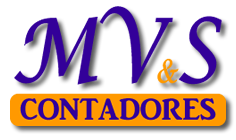It is a reliable and accurate method of recording financial transactions, and it is used by businesses of all sizes around the world. Audit trails are particularly useful during the audit process, as they enable auditors to review a company’s financial transactions comprehensively. They can verify the authenticity and accuracy of the transactions by following the trail from the financial statements back to the original transaction. This process helps in ensuring that the financial records are a true reflection of the company’s financial activities.
The entries above would be manually written in a journal throughout the year as business transactions occurred. These entries would then be totaled at the end of the period and transferred to the ledger. Today, accounting systems do this automatically with computer systems. Now that these transactions are recorded in their journals, they must be posted to the T-accounts or ledger accounts in the next step of the accounting cycle. Business owners must establish a Chart of Accounts that organizes financial transactions.
Reversing Entries
With double-entry accounting, the accounting equation should always be in balance. In other words, not only will debits be equal to credits, but the amount of assets will be equal to the amount of liabilities plus the amount of owner’s equity. The amounts in each of the accounts will be reported on the company’s financial statements in detail or in summary form. Once posted to the general ledger, you need to balance all of your business’s transactions. Do this at the end of the accounting period, which can be monthly, quarterly, or annually, depending on the company. Known as the “trial balance,” this provides insight into the financial health of your company and can help you identify any discrepancies in your bookkeeping.
- Journals can cover all of the entire transactions of a company or there can be different journals for different areas of the firm.
- Credit transactions involve the extension of credit to a customer.
- Known as the “trial balance,” this provides insight into the financial health of your company and can help you identify any discrepancies in your bookkeeping.
- Accurate transaction recording is vital for complying with regulatory requirements and providing transparency to stakeholders about the company’s financial performance and position.
What is an Asset?
The four financial transactions in accounting are recording, classifying, summarizing, and interpreting. Recording involves entering transactions into the accounting system. Classifying involves categorizing transactions into appropriate accounts. Summarizing involves creating financial statements from the classified transactions. Interpreting involves analyzing the financial statements to understand the financial health of the company.
DETERMINE THE ACCOUNT TYPE THAT’S INVOLVED
But, modified cash basis uses double-entry accounting and includes more accounts than cash basis. So, each transaction can have two or more journal entries to more accounts. The journal entries are aggregated to the general ledger which is then used to construct financial statements such as loss statements, balance sheets and cash flow statements.
- It is the money that a company earns from selling goods or services to its customers.
- This allows businesses to monitor their financial status, analyze their performance over time, and prepare accurate financial statements for stakeholders.
- The cost of vehicles is to be depreciated over the vehicles’ useful lives.
- Allowance for Doubtful AccountsThe Allowance for Doubtful Accounts is a contra-asset account since its balance is intended to be a credit balance (or a zero balance).
- Non-accounting transactions do not involve the exchange of economic resources or obligations.
Accounting textbooks use two accounts with the word “Supplies”– Supplies (an asset), (sometimes called Supplies Asset), and Supplies Expense. A contra revenue account that reports the discounts allowed by the seller if the customer pays the amount owed within a specified time period. For example, terms of “1/10, n/30” indicates that the buyer can deduct 1% of the amount owed if https://world-news-365.com/real-estate/page/2 the customer pays the amount owed within 10 days.
You need to know about revenue recognition (when a company can record sales revenue), the matching principle (matching expenses to revenues), and the accrual principle. Accounting transactions involve the exchange of economic resources or obligations between parties. Auditing is the process of examining a company’s financial statements to ensure that they are accurate and comply with GAAP.
- Here is an additional list of the most common business transactions and the journal entry examples to go with them.
- Auditing is the process of examining a company’s financial statements to ensure that they are accurate and comply with GAAP.
- Later, when the customer pays the amount owed, the company will credit Accounts Receivable (and will debit Cash).
- However, a survey of 500 annual reports of large U.S. corporations revealed that only about 1% had used the recommended direct method.
Always refer to the company’s Chart of Accounts for the official name of the expense accounts. In accounting, the name must always match exactly for accuracy and clarity. For example, Supplies and Supplies Expense are two different accounts. When cash will be paid later the account we use to track what the business will be paying later is Accounts Payable. http://xvidlist.com/video/45248/sex-sensual-video-category-moms-passions-360-sec-sealing-the-deal-w-hedvika In the journal entry, the $30,800 record of what is due to the company goes on the left (debit) side of the account because Accounts Receivable is increasing.
In summary, understanding these fundamentals allows for effective management and oversight of financial information, ensuring businesses can make informed decisions based on their financial status. Accounting transactions can also be classified as either internal or external. https://www.wan-press.info/page/55/ Actually, we simply transferred the amount from receivable to cash in the above entry. All transactions are assumed and simplified for illustration purposes. Personal transactions are those that are performed for personal purposes such as birthday expenditures.
